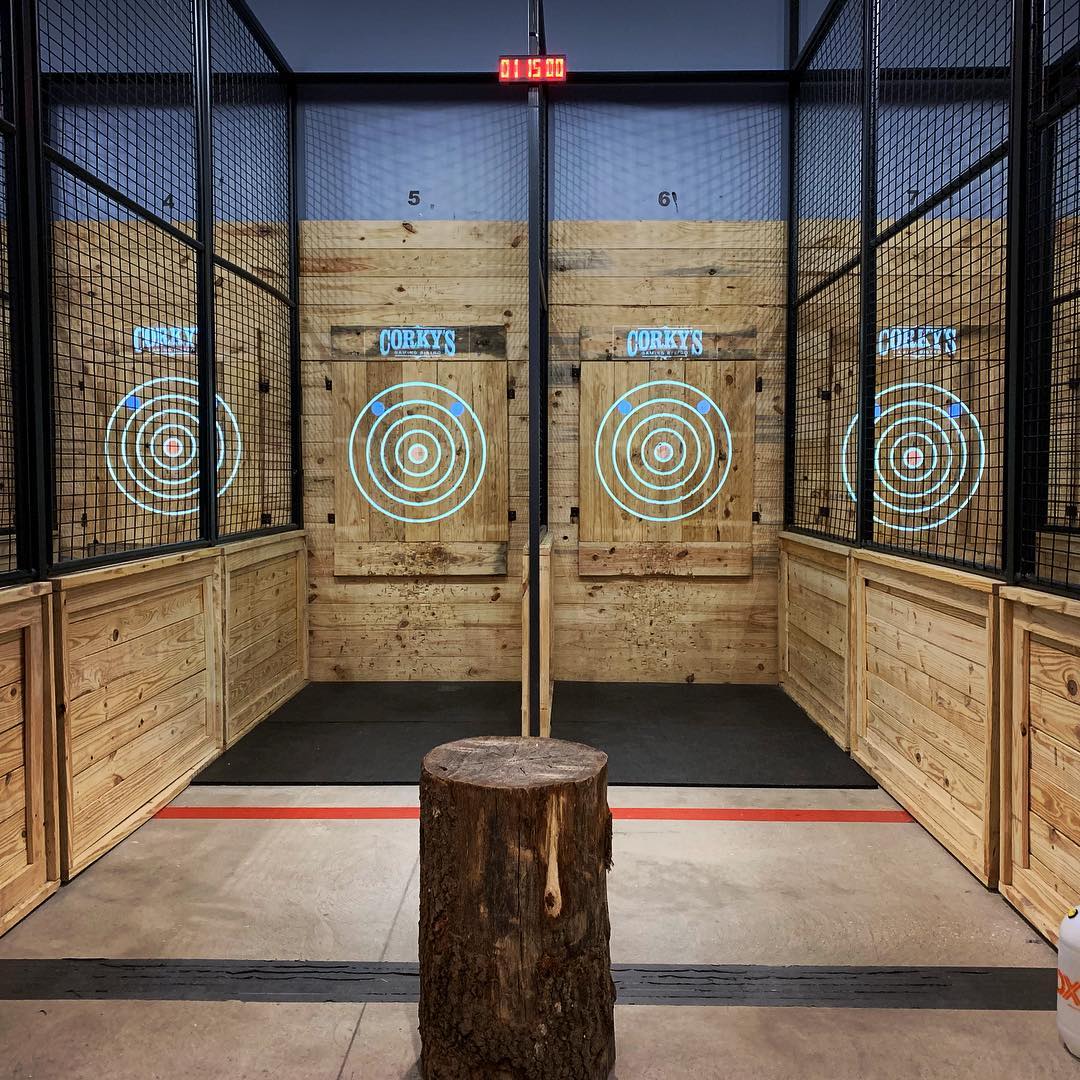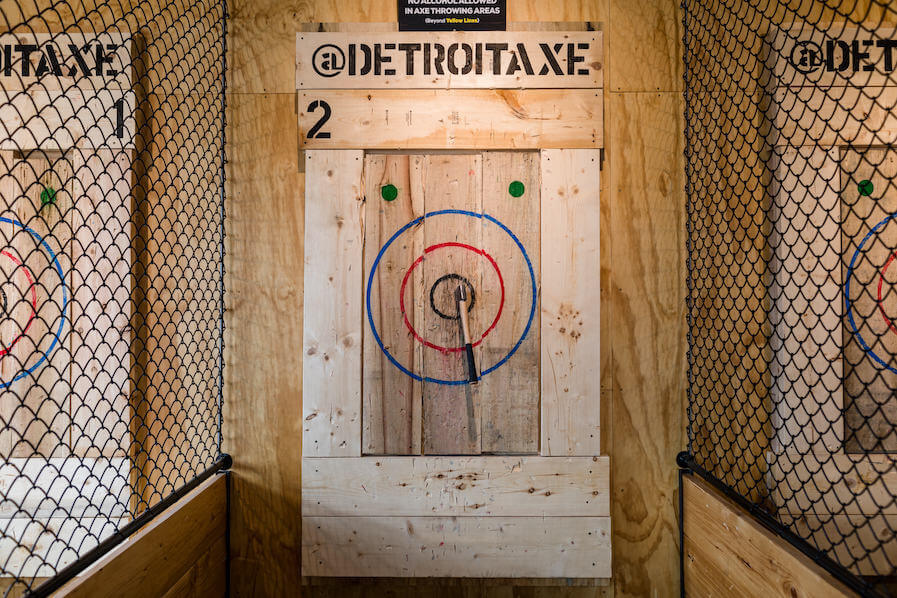Study the Axe Throwing Denver Scene: What You Need to Know
Study the Axe Throwing Denver Scene: What You Need to Know
Blog Article
The Fun of Axe Throwing: Exactly How This Sporting Activity Integrates Ability and Adrenaline for a Good Time
Axe throwing has become a captivating sporting activity that masterfully intertwines the requirement for accurate skill with the rush of adrenaline, offering individuals a engaging and special experience. The act of hurling an axe towards a target demands concentration and strategy, at the same time cultivating an ambience of camaraderie and pleasant competition. This interesting mix of psychological emphasis and physical exertion has actually made axe tossing a prominent option for those looking for both recreation and a sense of accomplishment. To absolutely value the depth and allure of this activity, one need to consider its beginnings, the necessary devices, and the foundational techniques that make sure both security and satisfaction.
The Beginnings of Axe Throwing
Axe tossing, a recreational task that has actually gained considerable appeal in the last few years, traces its roots back to ancient times. This primal sporting activity go back to early human history, when axes were mainly used as tools and devices. The earliest documents of axe usage in affordable contexts are found among the Celts and Vikings, who threw axes for sporting activity in addition to in combat training. The technique was not just an activity yet a vital ability for survival and warfare.
Middle ages European warriors, especially throughout the Center Ages, exercised axe tossing as part of their martial training. The Francisca, a kind of throwing axe utilized by the Franks, came to be renowned for its harmful accuracy. This typical tool was developed to be thrown at enemy shields and shield, showcasing its twin energy in both sporting activity and fight.
In even more current background, axe tossing saw a resurgence in the logging camps of The United States and copyright in the 20th and 19th centuries. Lumberjacks would involve in friendly competition, evaluating their accuracy and stamina by targeting at wooden targets. This advancement from a survival skill to a recreational task has led the means for its modern revival, with specialized locations and organizations now commemorating the sporting activity globally.
Equipment You Required
Recognizing the abundant background of axe throwing improves the admiration of the sporting activity's modern-day model. Central to this thrilling task is the tools, which is necessary for both security and efficiency. The main device is, of program, the axe. For leisure and affordable axe tossing, the most commonly made use of type is the hatchet, normally evaluating in between 1.25 to 2 pounds with a handle length of around 16 inches. The axe should have a sharp, well-kept blade and a manage made from resilient timber or composite material, making sure a good hold and equilibrium.
Just as crucial is the target. Regulation targets are constructed from timber, with softwood ranges like ache or cottonwood being preferred for their capability to hold the axe and absorb. The target is usually split right into five concentric circles, each with a details factor worth, to facilitate scoring.
Security equipment, however typically forgotten, is essential. Safety gloves can improve hold and avoid sores, while closed-toed footwear are a must to secure feet from dropped axes (axe throwing denver colorado). Finally, a well-lit, roomy tossing click site area, full with security obstacles, makes certain a regulated environment where participants can concentrate on developing their skills.
Standard Techniques Described
Mastering the fundamental strategies of axe throwing is essential for both safety and effectiveness. The initial strategy to comprehend is the grip. Hold the axe with a firm, yet kicked back grasp, akin to holding a golf dig this club. The dominant hand should be placed straight listed below the axe head, while the non-dominant hand sustains completion of the deal with.
Next, concentrate on the position. Stand with your feet shoulder-width apart, guaranteeing your body is stabilized. Your leading foot should be slightly onward, straightening with your target. This positioning aids in maintaining stability and directing power precisely in the direction of the target.

Safety First
Guaranteeing safety and security in axe throwing is extremely important to developing a pleasurable and injury-free experience. Safety gauges start with the place design. A well-designed axe tossing center features clear separations in between throwing lanes, tough backgrounds to catch roaming axes, and non-slip flooring to avoid crashes. Furthermore, appropriate illumination is essential to assist individuals maintain visual accuracy and spatial understanding.
Advantages of Axe Throwing
Axe tossing deals a myriad of benefits that prolong beyond easy entertainment. Physically, it provides a full-body workout, engaging muscular tissues in the arms, shoulders, back, and core. The recurring activity of tossing the axe also boosts hand-eye coordination and fine motor skills. For those wanting to enhance their general fitness, axe throwing can serve as a appealing and vibrant type of exercise.
Emotionally, axe tossing needs precision, strategy, and emphasis, making it an outstanding way to develop cognitive click to read skills. The focus required to strike the target can act as a kind of mindfulness, enabling individuals to remove their minds and minimize tension. This psychological interaction can be especially advantageous in aiding individuals create better analytic skills and psychological strength.
Socially, axe throwing is frequently appreciated in group setups, fostering team-building and sociability. Whether as part of a business event or an informal trip with buddies, the sporting activity motivates interaction and partnership. Additionally, the common experience of learning and enhancing with each other can strengthen connections and create enduring memories.
Verdict

The earliest documents of axe usage in competitive contexts are located amongst the Celts and Vikings, who tossed axes for sporting activity as well as in battle training. Release the axe when your hands are around at eye degree, permitting the axe's natural rotation to direct it towards the target.
A properly designed axe tossing center functions clear demarcations between throwing lanes, tough backdrops to catch stray axes, and non-slip flooring to protect against crashes. Individuals must be advised on the right method to throw the axe and deal with, highlighting controlled, deliberate motions over powerful tosses.
In recap, axe throwing stands out as a sporting activity that masterfully integrates adrenaline, accuracy, and skill.
Report this page